Circus World Museum circling the wagons
 Harold Burdick, who has been involved with wagon restoration and maintenance at Circus World Museum for 34 years, looks over one of the wagons the museum recently acquired.
Harold Burdick, who has been involved with wagon restoration and maintenance at Circus World Museum for 34 years, looks over one of the wagons the museum recently acquired. Ed Zagorski / News Republic
By Ed Zagorski, News Republic
Posted: Tuesday, November 1, 2011
As David SaLoutos flipped through a carousel magazine last winter, he was surprised to recognize three authentic and potentially historic circus wagons for sale in Pennsylvania.
SaLoutos, who serves as the ringmaster at Circus World Museum, handed the magazine to Harold Burdick, who has been involved with wagon restoration and maintenance at the museum for 34 years.
"As soon as I read the advertisement, I grabbed my magnifying glass and looked at the wagons," Burdick said. "I knew they were the real thing because I know circus wagons like the back of my hand."
In the magazine, Burdick saw a ticket wagon and two cage wagons he believed were constructed in 1924 and associated with the Cole Bros. Circus from the 1900s.
Brudick decided the wagons would be a perfect fit for Circus World's collection and presented the idea to Circus World Museum Executive Director Steve Freese.
"We just knew we needed to have these wagons," Freese said. "Circus wagons from that time period are really underrepresented in our collection."
Burdick and Freese went to visit with the private collector in March.
"Once I saw the undercarriage and the square bolts of the wagons I knew these wagons were the real deal," Burdick said. "There are not many wagons out there like these. I am really excited we were able to get them for our museum."
And with financial help from the Kohler Foundation of Wisconsin, the wagons arrived at the Circus World Museum late last month.
Freese said they are the first wagons added to museum's collection since 2002, which now features 218.
He said one of the cage wagons shows claw marks.
"Even though it was repaired, the claw marks are still visible," Freese said. "That's history right there. We know from looking at historic pictures that these wagons once carried animals - bears or tigers."
He said there are no other wagons in the museum's collection that hold such dramatic evidence of what the wagons were used for during their time in service.
"Other than the paint, the wagons are about 90 percent original," Burdick said. "They need very little restoration work, if any."
Burdick said he was fascinated by a brake system on one of the cage wagons.
"It's so unique," Burdick said. "All the rider had to do was put his foot down on a lever and it would activate a pulley and then a steel brake would stop the wagon wheel. A pretty ingenious device for the time this wagon was built."
Freese said the three wagons do not duplicate any others in the museum's collection.
Freese said a small crew from the Kohler Foundation will visit the museum to help clean the wagons before they are placed on display.
SaLoutos, who serves as the ringmaster at Circus World Museum, handed the magazine to Harold Burdick, who has been involved with wagon restoration and maintenance at the museum for 34 years.
"As soon as I read the advertisement, I grabbed my magnifying glass and looked at the wagons," Burdick said. "I knew they were the real thing because I know circus wagons like the back of my hand."
In the magazine, Burdick saw a ticket wagon and two cage wagons he believed were constructed in 1924 and associated with the Cole Bros. Circus from the 1900s.
Brudick decided the wagons would be a perfect fit for Circus World's collection and presented the idea to Circus World Museum Executive Director Steve Freese.
"We just knew we needed to have these wagons," Freese said. "Circus wagons from that time period are really underrepresented in our collection."
Burdick and Freese went to visit with the private collector in March.
"Once I saw the undercarriage and the square bolts of the wagons I knew these wagons were the real deal," Burdick said. "There are not many wagons out there like these. I am really excited we were able to get them for our museum."
And with financial help from the Kohler Foundation of Wisconsin, the wagons arrived at the Circus World Museum late last month.
Freese said they are the first wagons added to museum's collection since 2002, which now features 218.
He said one of the cage wagons shows claw marks.
"Even though it was repaired, the claw marks are still visible," Freese said. "That's history right there. We know from looking at historic pictures that these wagons once carried animals - bears or tigers."
He said there are no other wagons in the museum's collection that hold such dramatic evidence of what the wagons were used for during their time in service.
"Other than the paint, the wagons are about 90 percent original," Burdick said. "They need very little restoration work, if any."
Burdick said he was fascinated by a brake system on one of the cage wagons.
"It's so unique," Burdick said. "All the rider had to do was put his foot down on a lever and it would activate a pulley and then a steel brake would stop the wagon wheel. A pretty ingenious device for the time this wagon was built."
Freese said the three wagons do not duplicate any others in the museum's collection.
Freese said a small crew from the Kohler Foundation will visit the museum to help clean the wagons before they are placed on display.



























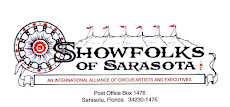

















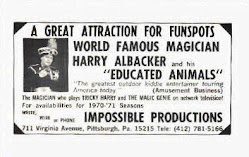

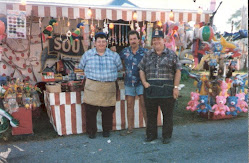





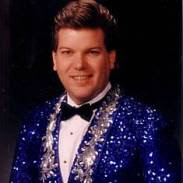


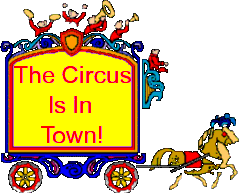


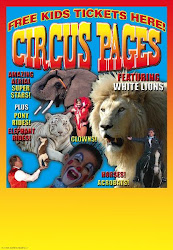

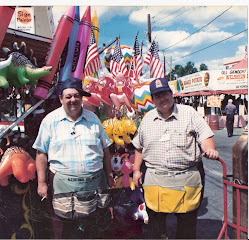
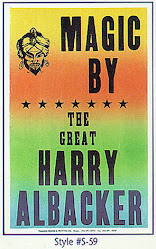















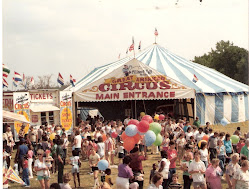









No comments:
Post a Comment